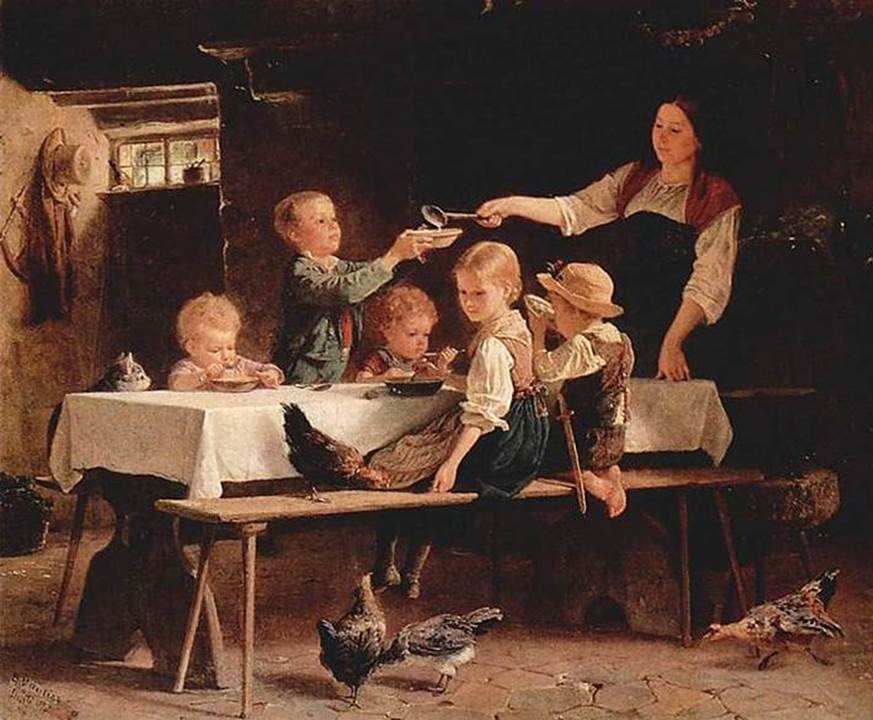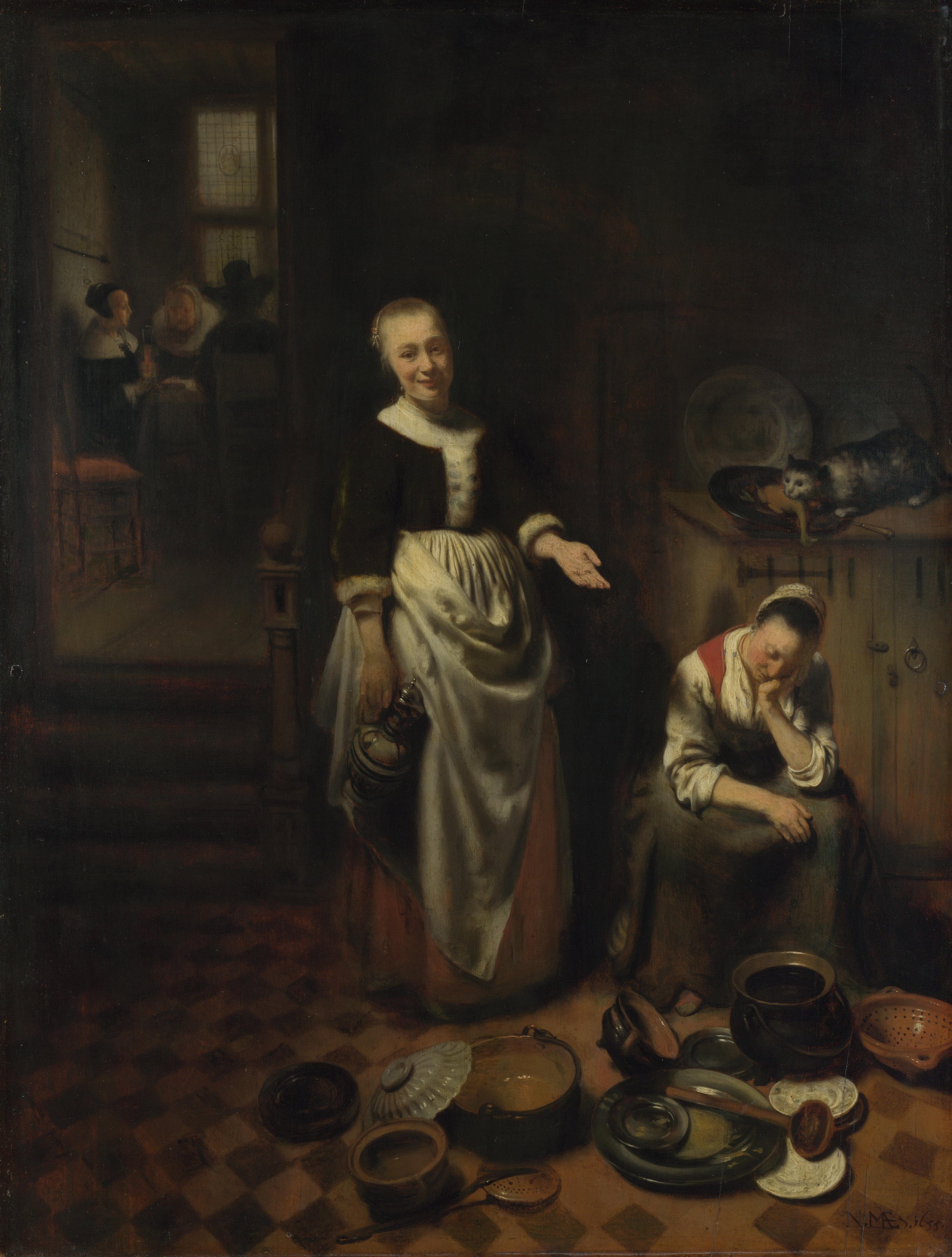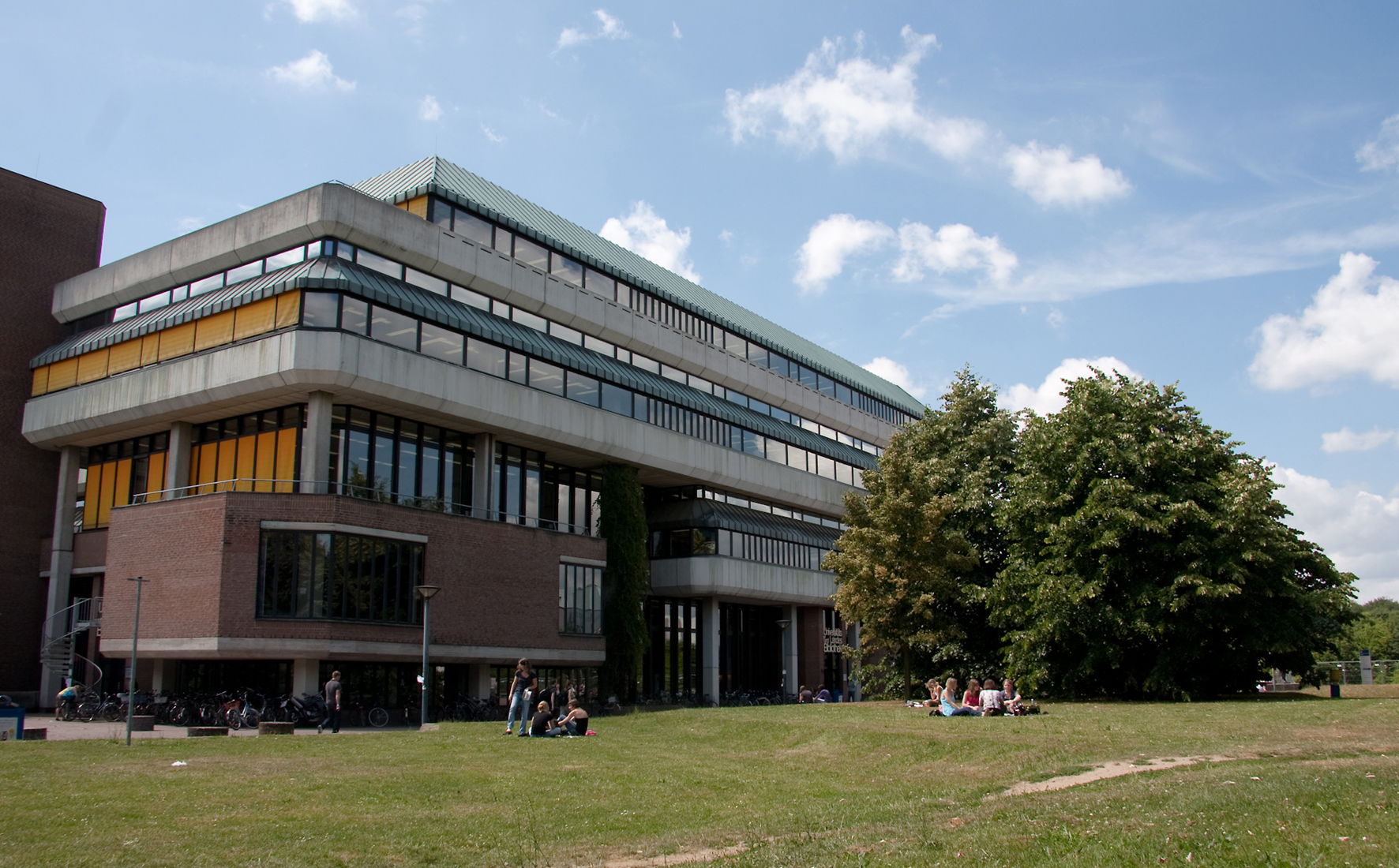|
Benjamin Vautier (Swiss Artist)
Marc Louis Benjamin Vautier (27 April 1829 – 25 April 1898) was a Swiss genre painter and illustrator. Life and work He was born in Morges. He was the son of a teacher and began his art studies in Geneva, then worked for two years as a jewelry enamel painter. In 1849, he obtained a position in the studios of history painter Jean-Léonard Lugardon. While there, he also took courses in anatomical drawing at a nearby art school. The following year, he began attending the Kunstakademie Düsseldorf and became a member of "Malkasten" (Paintbox), a local artists' association. He left the Academy for one year to work with Rudolf Jordan as a private student. Eventually, he decided to devote himself to depicting peasant life, which he observed for several years by visiting the Bernese Oberland. In 1856 he went to Paris, but returned to Düsseldorf a year later and painted his first peasant genre pictures. Initially, he focused on Switzerland, but finally decided to concentrate on t ... [...More Info...] [...Related Items...] OR: [Wikipedia] [Google] [Baidu] |
Morges
Morges (; la, Morgiis, plural, probably ablative, else dative; frp, Môrges) is a municipality in the Swiss canton of Vaud and the seat of the district of Morges. It is located on Lake Geneva. History Morges is first mentioned in 1288 as ''Morgia''. It was known by its German name ''Morsee'' though that name is no longer used. Prehistory There were several prehistoric settlements along what is now the Morges lakefront. The largest and best known, ''Grande-Cité'', was occupied in the late Bronze Age. One of the wooden objects at Grande-Cité has been dendrochronologically dated to 1031 BC. Many of the stilts and building structures have been preserved in situ. A dugout of oak was discovered near the settlement and in 1877 half of it was recovered and placed in the Musée d'histoire et d'art in Geneva. About a hundred meters (yards) further north is the village of Vers-l'Eglise. The first settlement here dates back to the Neolithic, based on a layer of ceramic objects that ... [...More Info...] [...Related Items...] OR: [Wikipedia] [Google] [Baidu] |
Karl Leberecht Immermann
Karl Leberecht Immermann (24 April 1796 – 25 August 1840) was a German dramatist, novelist and a poet. Biography He was born at Magdeburg, the son of a government official. In 1813 he went to study law at Halle, where he remained, after the suppression of the university by Napoleon in the same year, until Frederick William III of Prussia's "Summons to my people" on 17 March. Immermann responded quickly, but was prevented by illness from taking part in the earlier campaign; he fought, however, in 1815 at Ligny and Waterloo, and marched into Paris with Blücher. At the conclusion of the war, he resumed his studies at Halle, and after being ''Referendar'' in Magdeburg, was appointed in 1819 ''Assessor'' at Münster in Westphalia. Here he made the acquaintance of Elise von Lützow, Countess von Ahlefeldt, wife of Ludwig Adolf Wilhelm Freiherr von Lützow. She inspired him to begin writing, and their relationship is reflected in several dramas written about this time. In 1 ... [...More Info...] [...Related Items...] OR: [Wikipedia] [Google] [Baidu] |
19th-century Swiss Painters
The 19th (nineteenth) century began on 1 January 1801 ( MDCCCI), and ended on 31 December 1900 ( MCM). The 19th century was the ninth century of the 2nd millennium. The 19th century was characterized by vast social upheaval. Slavery was abolished in much of Europe and the Americas. The First Industrial Revolution, though it began in the late 18th century, expanding beyond its British homeland for the first time during this century, particularly remaking the economies and societies of the Low Countries, the Rhineland, Northern Italy, and the Northeastern United States. A few decades later, the Second Industrial Revolution led to ever more massive urbanization and much higher levels of productivity, profit, and prosperity, a pattern that continued into the 20th century. The Islamic gunpowder empires fell into decline and European imperialism brought much of South Asia, Southeast Asia, and almost all of Africa under colonial rule. It was also marked by the collapse of the large S ... [...More Info...] [...Related Items...] OR: [Wikipedia] [Google] [Baidu] |
Genre Painters
Genre art is the pictorial representation in any of various media of scenes or events from everyday life, such as markets, domestic settings, interiors, parties, inn scenes, work, and street scenes. Such representations (also called genre works, genre scenes, or genre views) may be realistic, imagined, or romanticized by the artist. Some variations of the term ''genre art'' specify the medium or type of visual work, as in ''genre painting'', ''genre prints'', ''genre photographs'', and so on. The following concentrates on painting, but genre motifs were also extremely popular in many forms of the decorative arts, especially from the Rococo of the early 18th century onwards. Single figures or small groups decorated a huge variety of objects such as porcelain, furniture, wallpaper, and textiles. Genre painting ''Genre painting'', also called ''genre scene'' or ''petit genre'', depicts aspects of everyday life by portraying ordinary people engaged in common activities. One comm ... [...More Info...] [...Related Items...] OR: [Wikipedia] [Google] [Baidu] |
1898 Deaths
Events January–March * January 1 – New York City annexes land from surrounding counties, creating the City of Greater New York as the world's second largest. The city is geographically divided into five boroughs: Manhattan, Brooklyn, Queens, The Bronx and Staten Island. * January 13 – Novelist Émile Zola's open letter to the President of the French Republic on the Dreyfus affair, ''J'Accuse…!'', is published on the front page of the Paris daily newspaper ''L'Aurore'', accusing the government of wrongfully imprisoning Alfred Dreyfus and of antisemitism. * February 12 – The automobile belonging to Henry Lindfield of Brighton rolls out of control down a hill in Purley, London, England, and hits a tree; thus he becomes the world's first fatality from an automobile accident on a public highway. * February 15 – Spanish–American War: The USS Maine (ACR-1), USS ''Maine'' explodes and sinks in Havana Harbor, Cuba, for reasons never fully establish ... [...More Info...] [...Related Items...] OR: [Wikipedia] [Google] [Baidu] |
1829 Births
Eighteen or 18 may refer to: * 18 (number), the natural number following 17 and preceding 19 * one of the years 18 BC, AD 18, 1918, 2018 Film, television and entertainment * ''18'' (film), a 1993 Taiwanese experimental film based on the short story ''God's Dice'' * ''Eighteen'' (film), a 2005 Canadian dramatic feature film * 18 (British Board of Film Classification), a film rating in the United Kingdom, also used in Ireland by the Irish Film Classification Office * 18 (''Dragon Ball''), a character in the ''Dragon Ball'' franchise * "Eighteen", a 2006 episode of the animated television series ''12 oz. Mouse'' Music Albums * ''18'' (Moby album), 2002 * ''18'' (Nana Kitade album), 2005 * '' 18...'', 2009 debut album by G.E.M. Songs * "18" (5 Seconds of Summer song), from their 2014 eponymous debut album * "18" (One Direction song), from their 2014 studio album ''Four'' * "18", by Anarbor from their 2013 studio album '' Burnout'' * "I'm Eighteen", by Alice Cooper common ... [...More Info...] [...Related Items...] OR: [Wikipedia] [Google] [Baidu] |
University And State Library Düsseldorf
The University and State Library Düsseldorf (german: Universitäts- und Landesbibliothek Düsseldorf, abbreviated ULB Düsseldorf) is a central service institution of Heinrich Heine University. Along with Bonn and Münster, it is also one of the three State Libraries of North Rhine-Westphalia. Tradition and Modernity From 1965 to 1969, the University and Library Düsseldorf gradually developed out of the Medical Academy in Düsseldorf. There is no real founding year of the ULB, but the foundation stone for an integrated library system was laid when the former State and City Library of Düsseldorf was taken over by the university in 1970 and merged with the Central Library of the former Medical Academy. Structure and Holdings The ULB consists of one central library and four decentralized locations. Management and media processing are organized centrally. Catalogues, databases, e-books and e-journals are accessible throughout the whole university as well as at home via the lib ... [...More Info...] [...Related Items...] OR: [Wikipedia] [Google] [Baidu] |
Berthold Auerbach
Berthold Auerbach (28 February 1812 – 8 February 1882) was a German-Jewish poet and author. He was the founder of the German "tendency novel", in which fiction is used as a means of influencing public opinion on social, political, moral, and religious questions. Biography Moses (Moyses) Baruch Auerbach was born in Nordstetten (now Horb am Neckar) in the Kingdom of Württemberg. He attended Eberhard-Ludwigs-Gymnasium. He was intended for the ministry, but after studying philosophy at Tübingen, Munich and Heidelberg, and becoming estranged from Jewish orthodoxy by the study of Spinoza, he devoted himself to literature. While a student in Heidelberg and under the pseudonym “Theobald Chauber,” he produced a ''Biography of Frederick the Great'' (1834–36). Another early publication was entitled ''Das Judentum und die neueste Litteratur'' (Judaism and Recent Literature; 1836), and was to be followed by a series of novels taken from Jewish history. Of this intended series he ... [...More Info...] [...Related Items...] OR: [Wikipedia] [Google] [Baidu] |
Black Forest
The Black Forest (german: Schwarzwald ) is a large forested mountain range in the state of Baden-Württemberg in southwest Germany, bounded by the Rhine Valley to the west and south and close to the borders with France and Switzerland. It is the source of the Danube and Neckar rivers. Its highest peak is the Feldberg with an elevation of above sea level. Roughly oblong in shape, with a length of and breadth of up to , it has an area of about 6,009 km2 (2,320 sq mi). Historically, the area was known for forestry and the mining of ore deposits, but tourism has now become the primary industry, accounting for around 300,000 jobs. There are several ruined military fortifications dating back to the 17th century. History In ancient times, the Black Forest was known as , after the Celtic deity, Abnoba. In Roman times (Late antiquity), it was given the name ("Marcynian Forest", from the Germanic word ''marka'' = "border"). The Black Forest probably represented the bo ... [...More Info...] [...Related Items...] OR: [Wikipedia] [Google] [Baidu] |
Düsseldorf
Düsseldorf ( , , ; often in English sources; Low Franconian and Ripuarian: ''Düsseldörp'' ; archaic nl, Dusseldorp ) is the capital city of North Rhine-Westphalia, the most populous state of Germany. It is the second-largest city in the state and the seventh-largest city in Germany, with a population of 617,280. Düsseldorf is located at the confluence of two rivers: the Rhine and the Düssel, a small tributary. The ''-dorf'' suffix means "village" in German (English cognate: ''thorp''); its use is unusual for a settlement as large as Düsseldorf. Most of the city lies on the right bank of the Rhine. Düsseldorf lies in the centre of both the Rhine-Ruhr and the Rhineland Metropolitan Region. It neighbours the Cologne Bonn Region to the south and the Ruhr to the north. It is the largest city in the German Low Franconian dialect area (closely related to Dutch). Mercer's 2012 Quality of Living survey ranked Düsseldorf the sixth most livable city in the world. Düsse ... [...More Info...] [...Related Items...] OR: [Wikipedia] [Google] [Baidu] |
Bernese Oberland
The Bernese Oberland ( en, Bernese Highlands, german: Berner Oberland; gsw, Bärner Oberland; french: Oberland bernois), the highest and southernmost part of the canton of Bern, is one of the canton's five administrative regions (in which context it is referred to as ''Oberland'' without further specification). It constitutes the Alpine region of the canton and the northern side of the Bernese Alps, including many of its highest peaks, among which the Finsteraarhorn (), the highest in both range and canton. The region essentially coincides with the upper basin of the Aare, the latter notably comprehending Lake Thun and Lake Brienz, the two large lakes of the region. On the banks of the lakes or the Aare are the main settlements of Thun, Spiez, Interlaken, Brienz and Meiringen. The numerous side valleys of the Bernese Oberland include a large number of Alpine villages, many of them being tourist resorts and connected by mountain railways to Spiez and Interlaken. The Lötschbe ... [...More Info...] [...Related Items...] OR: [Wikipedia] [Google] [Baidu] |










